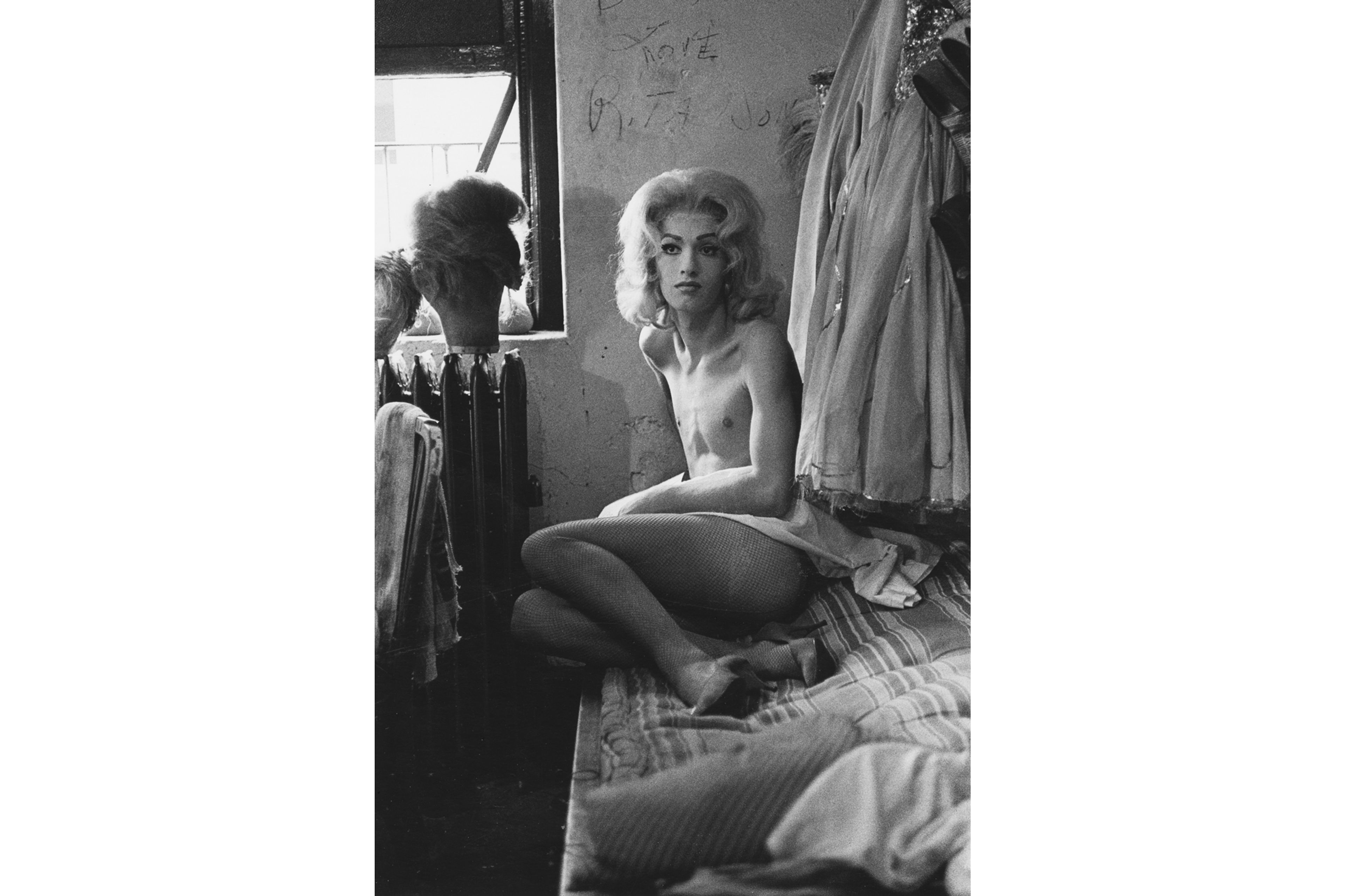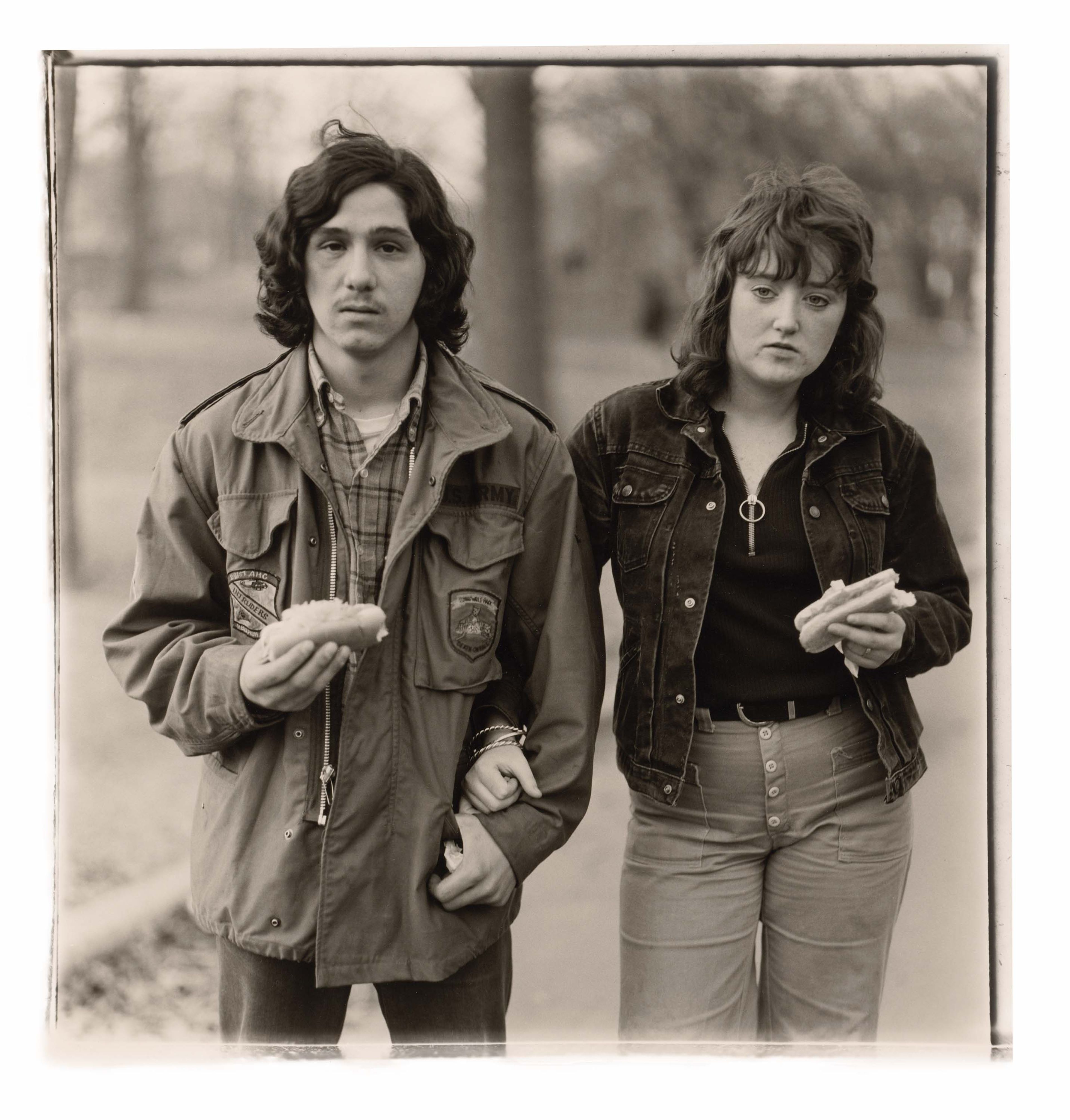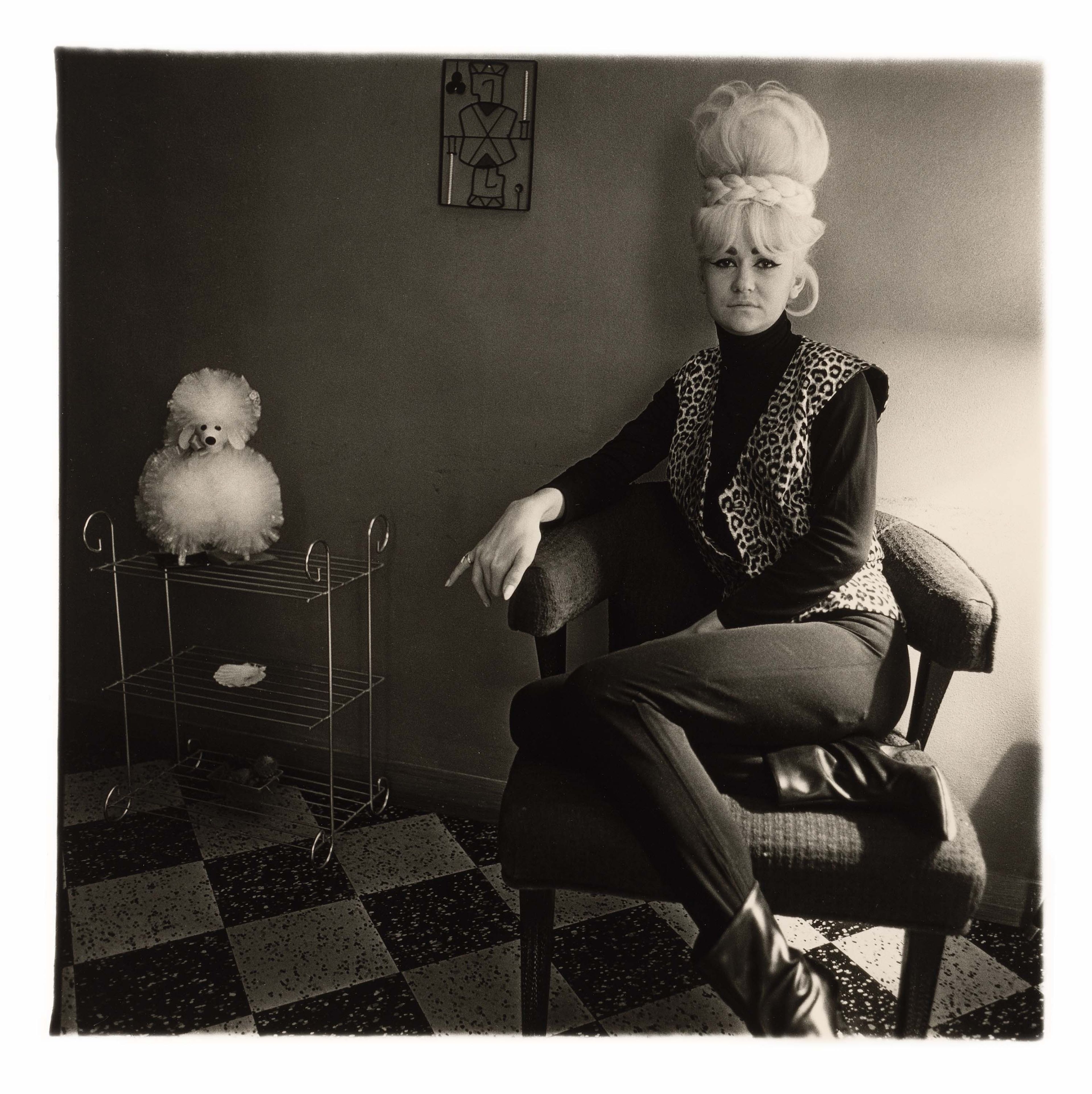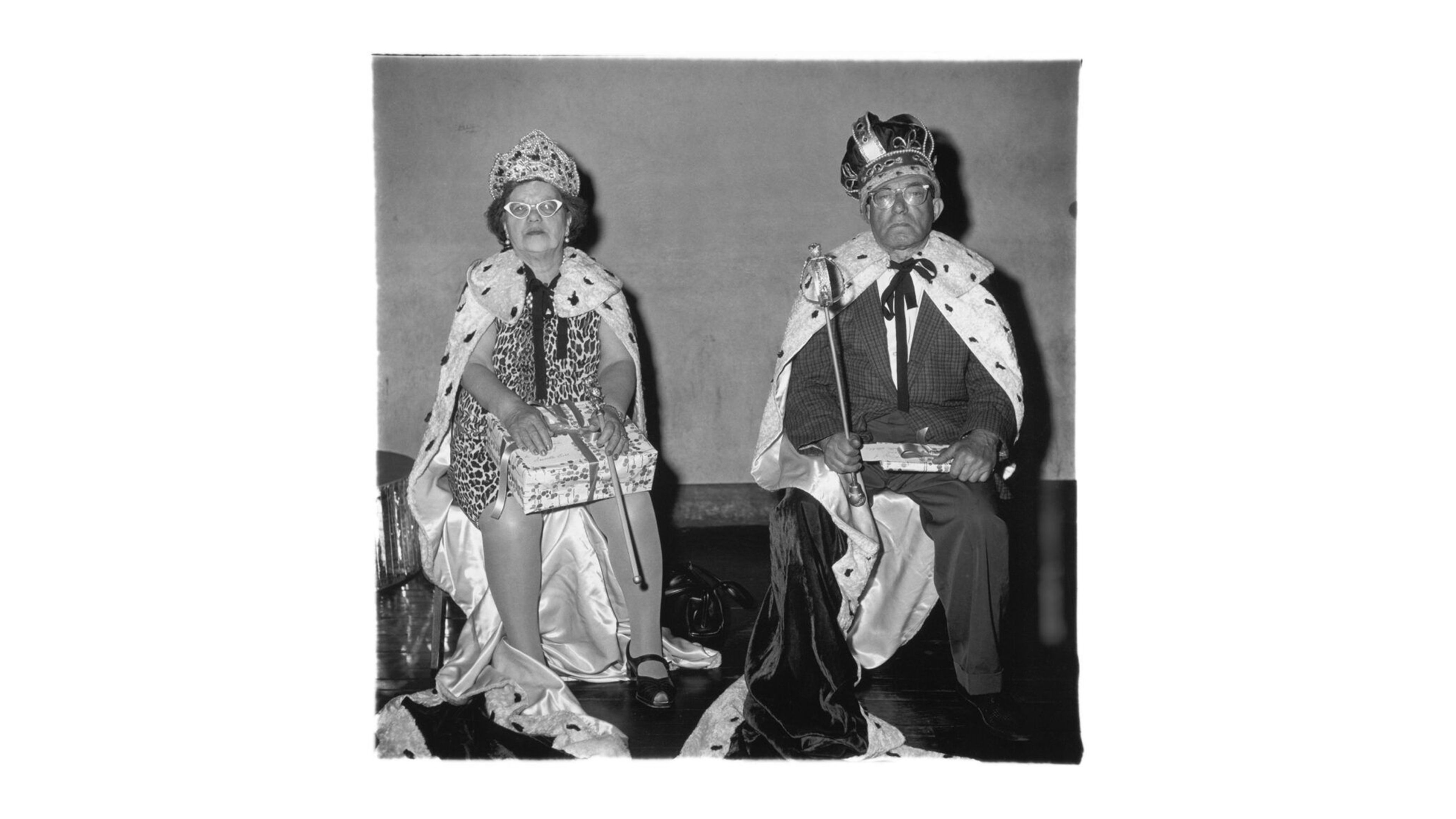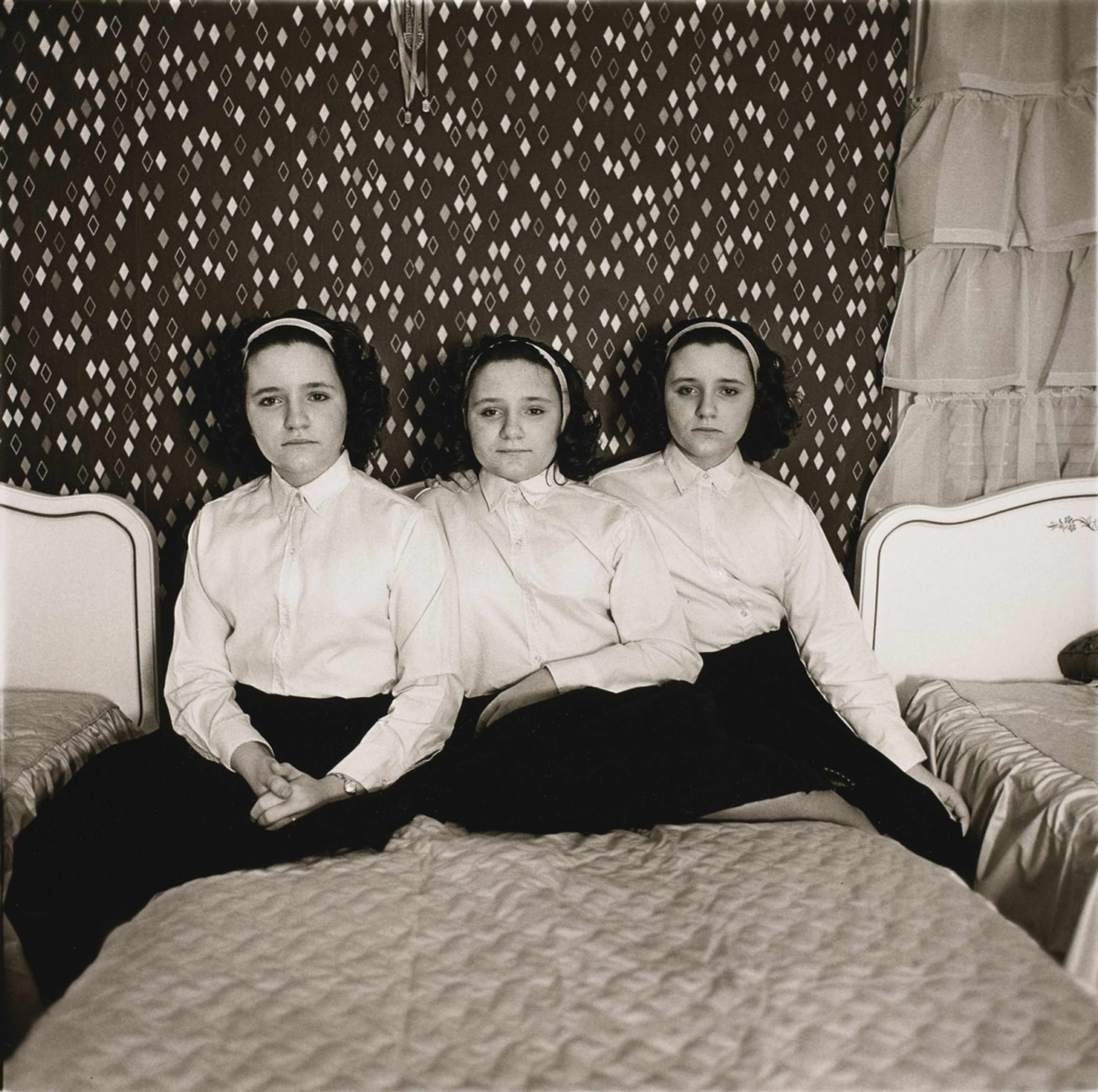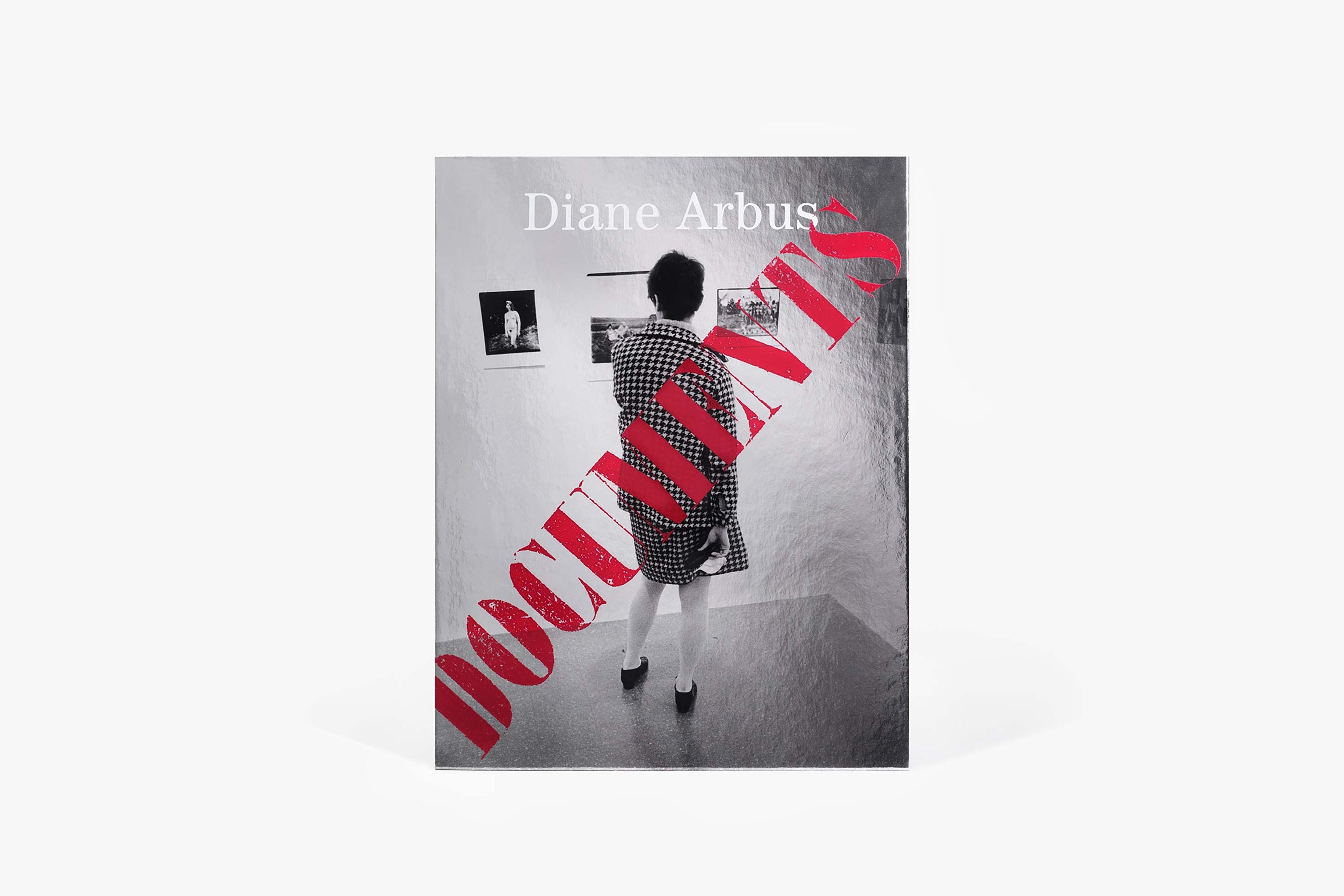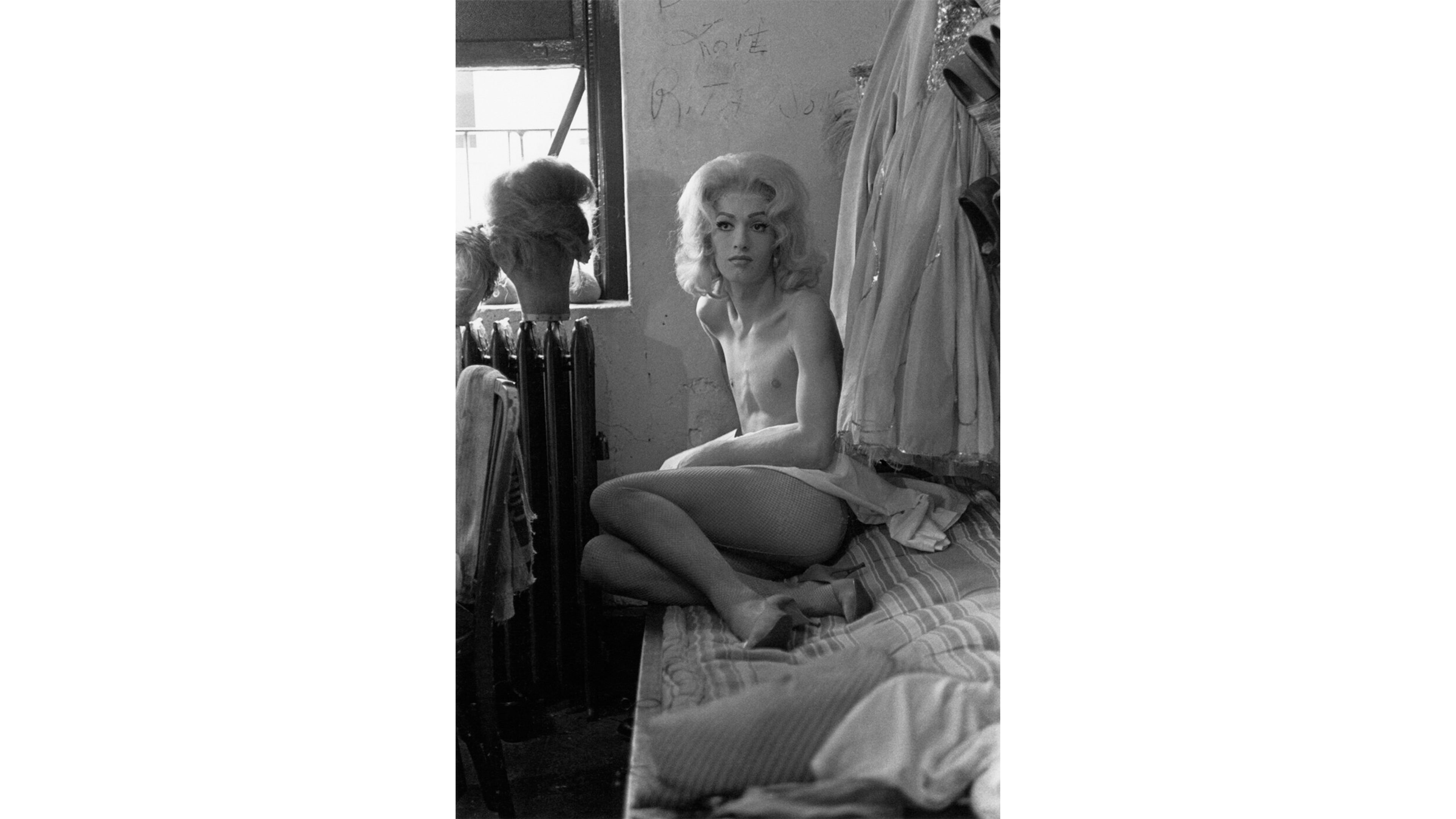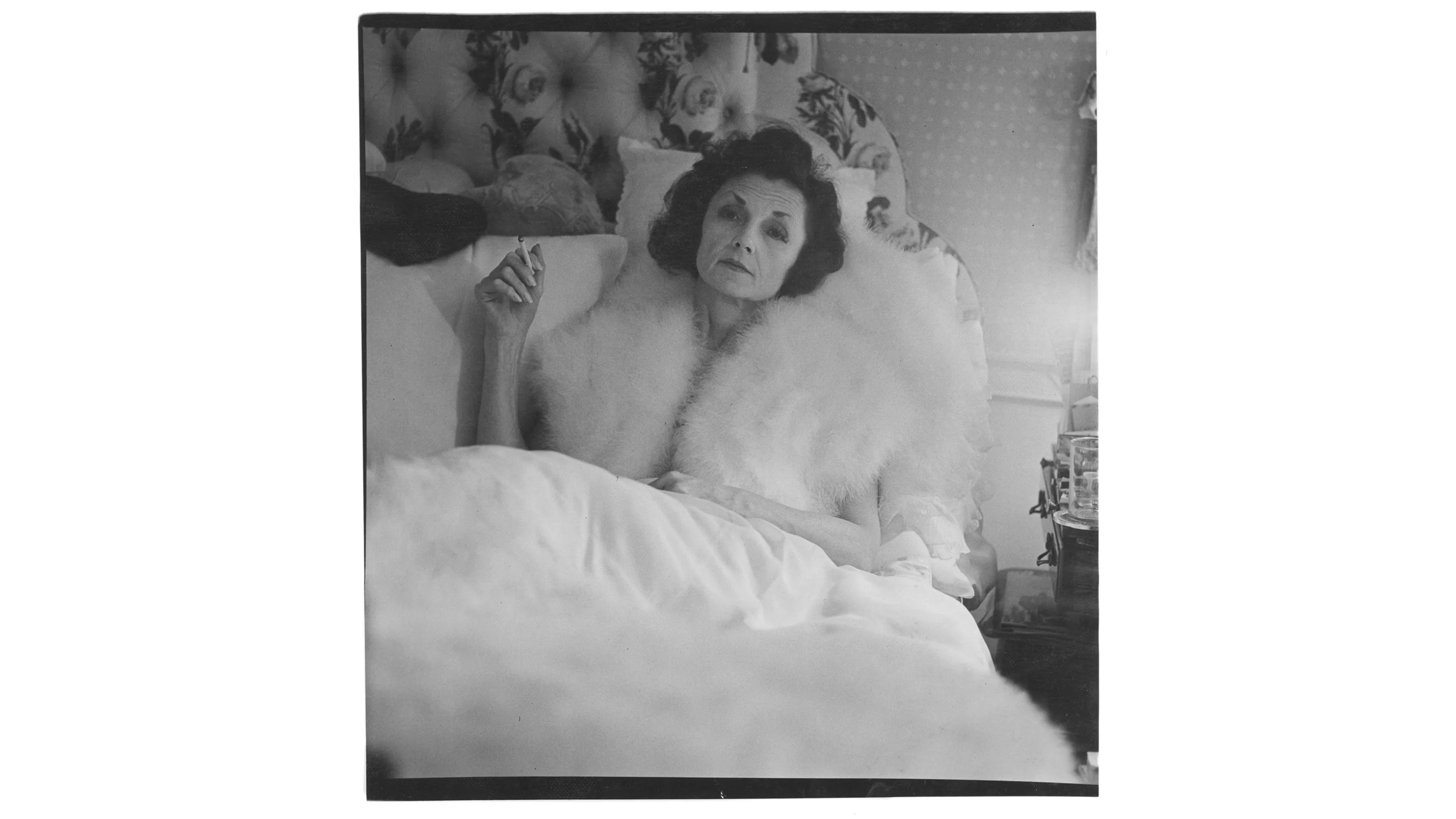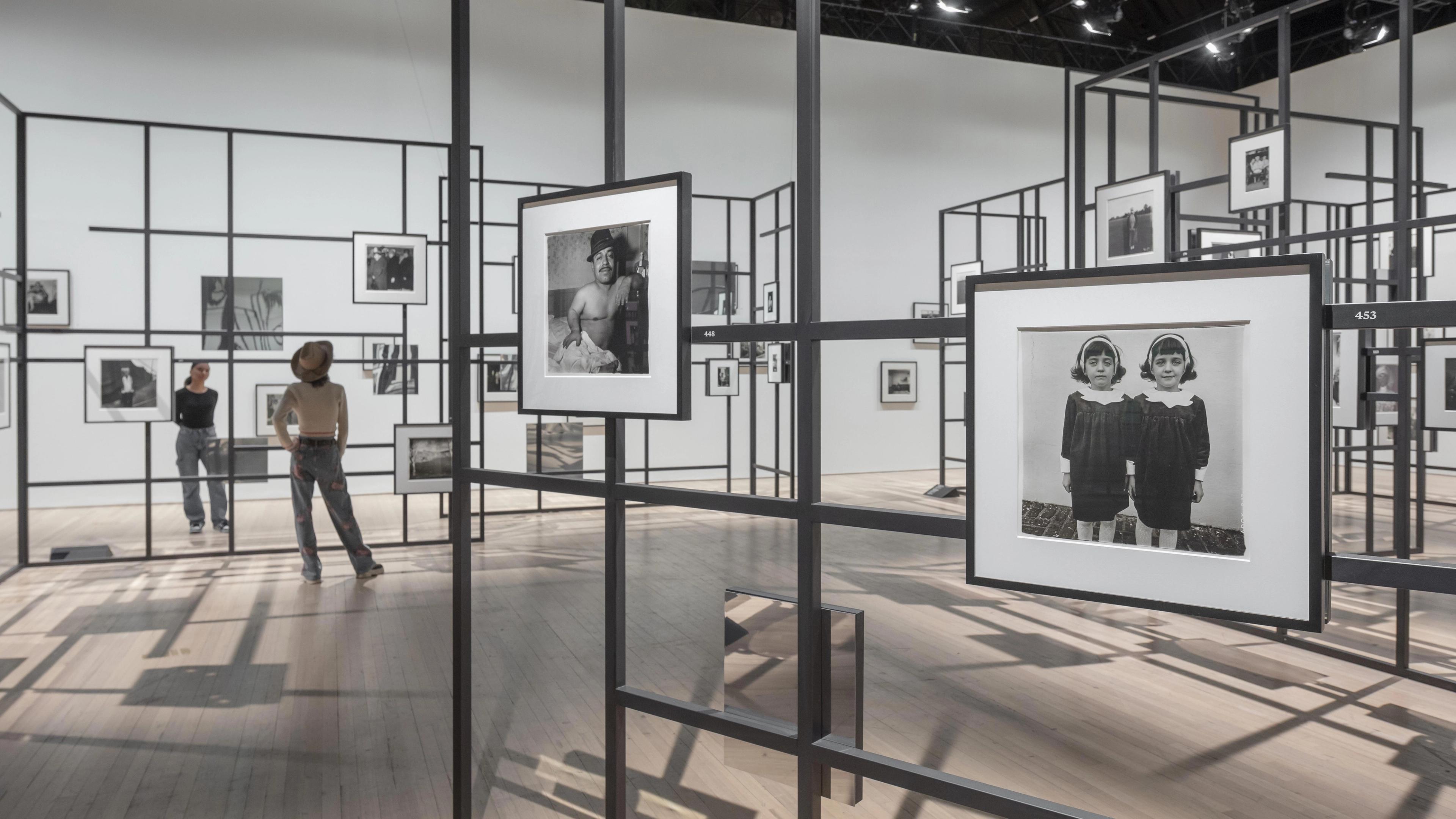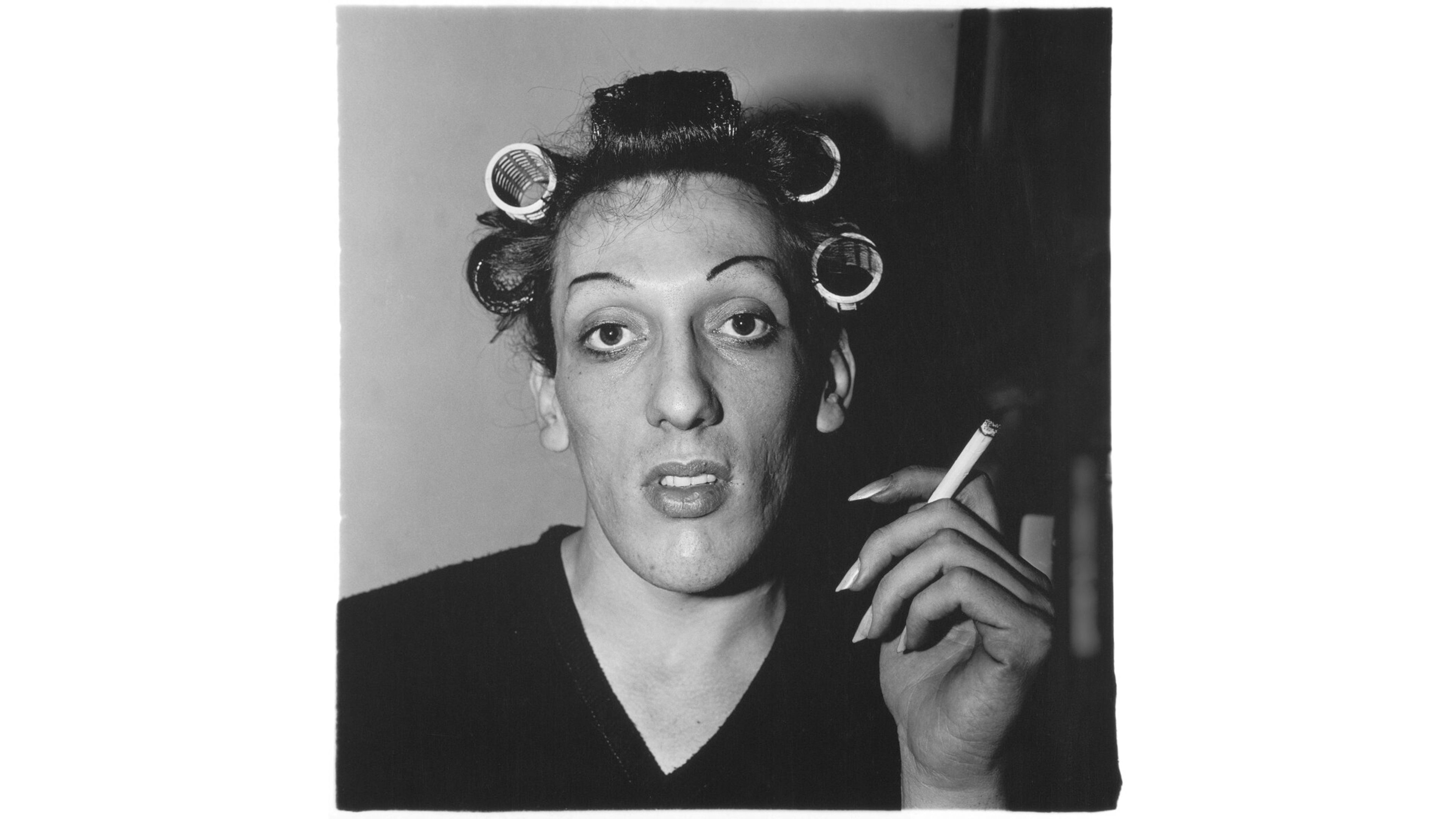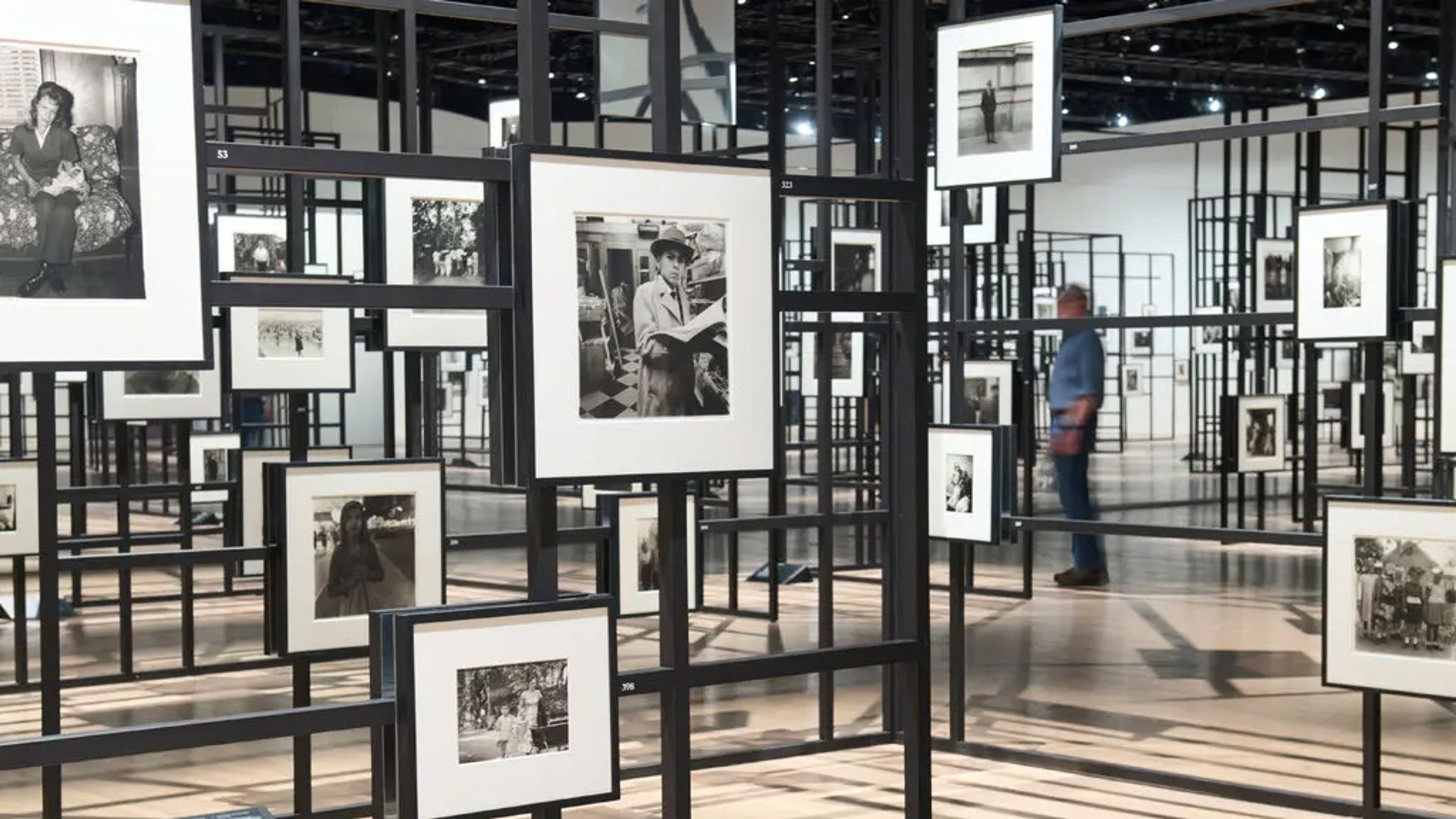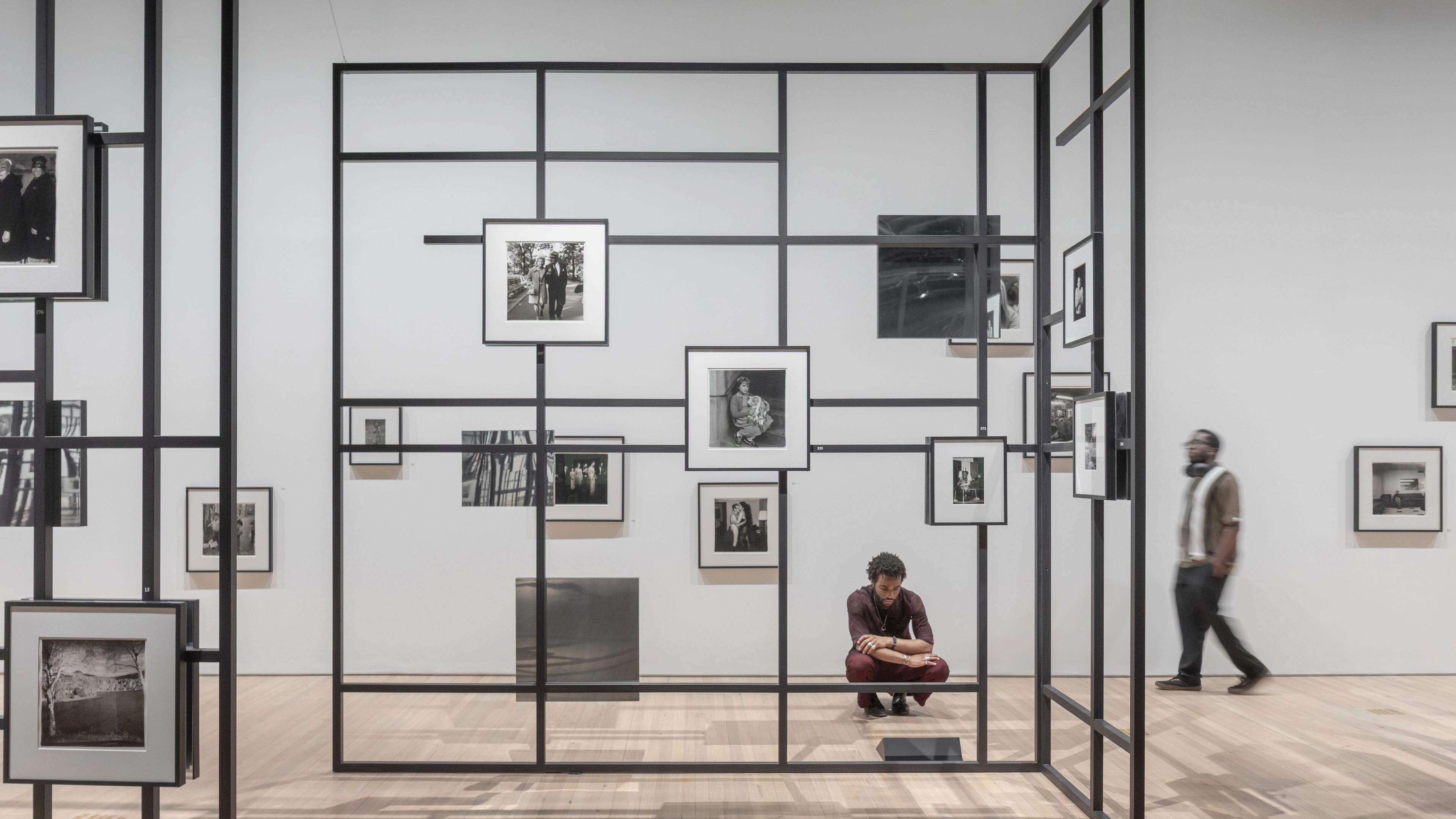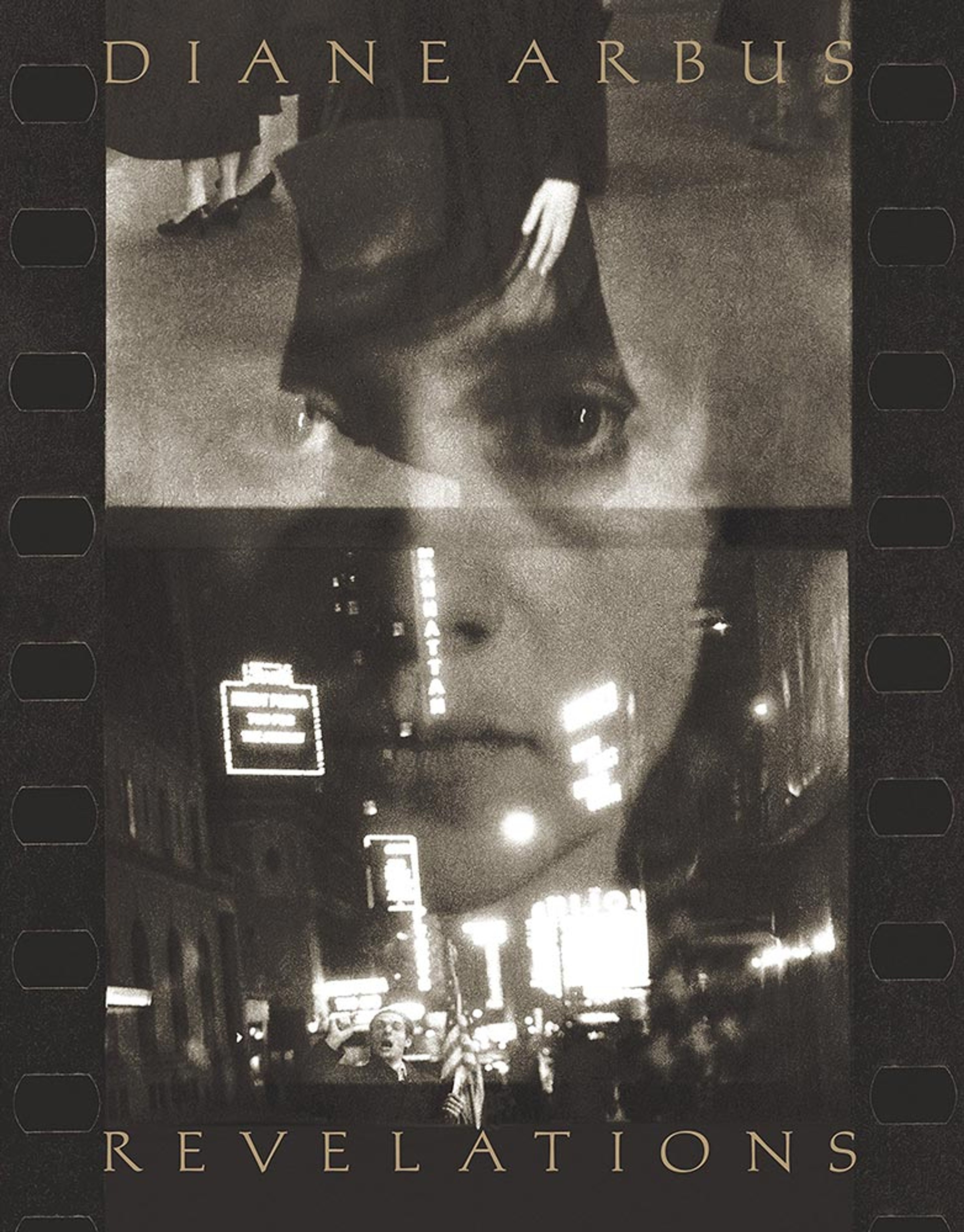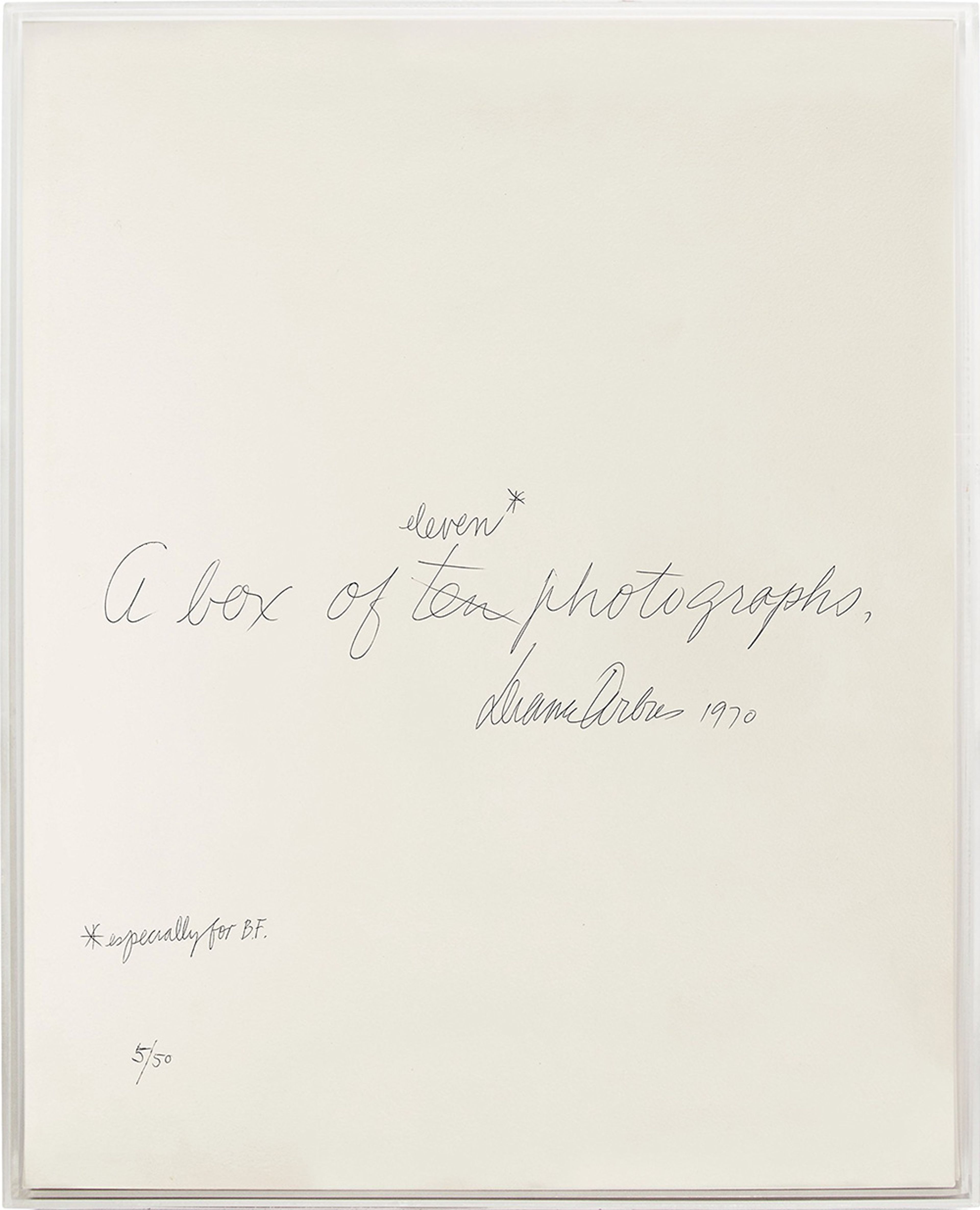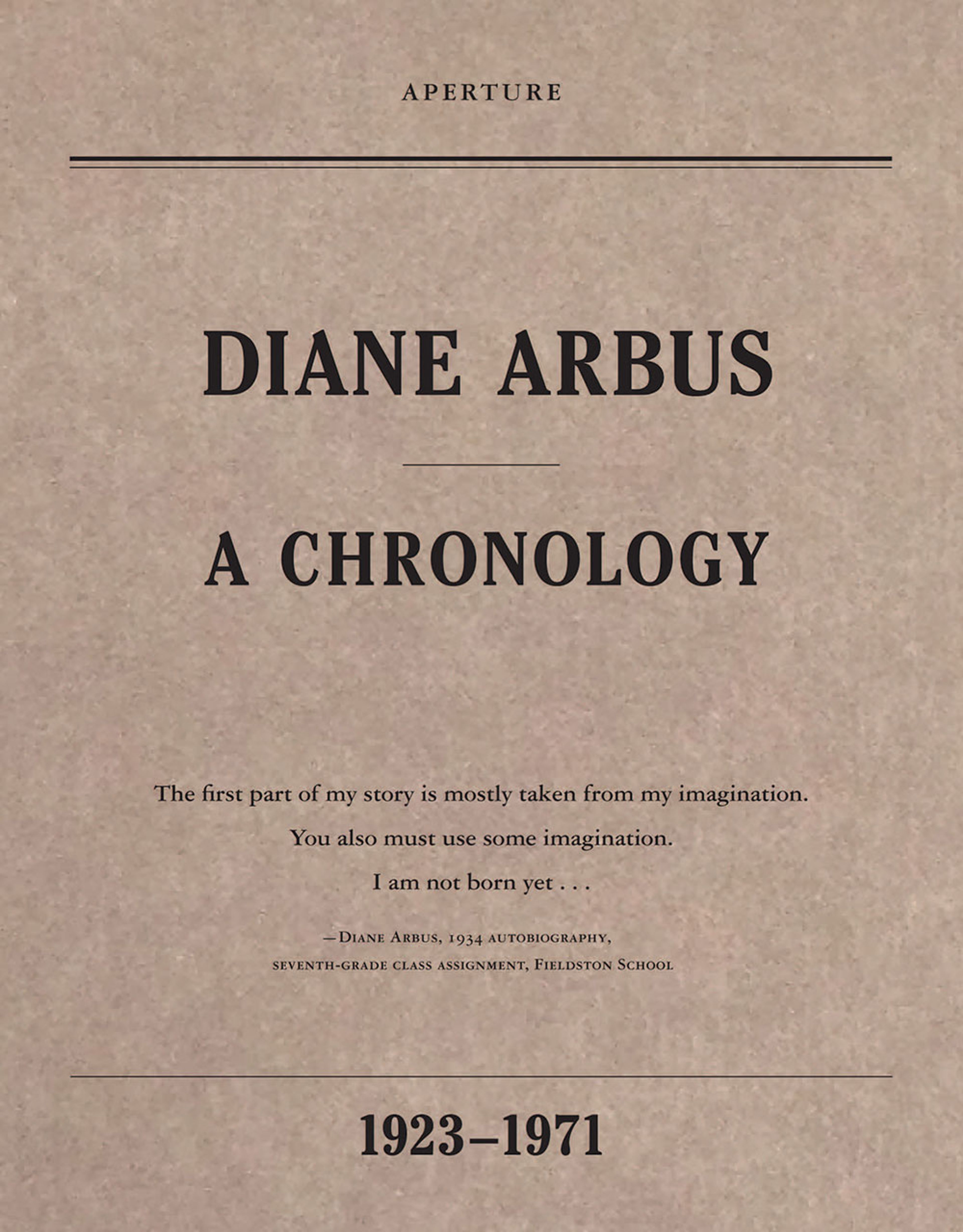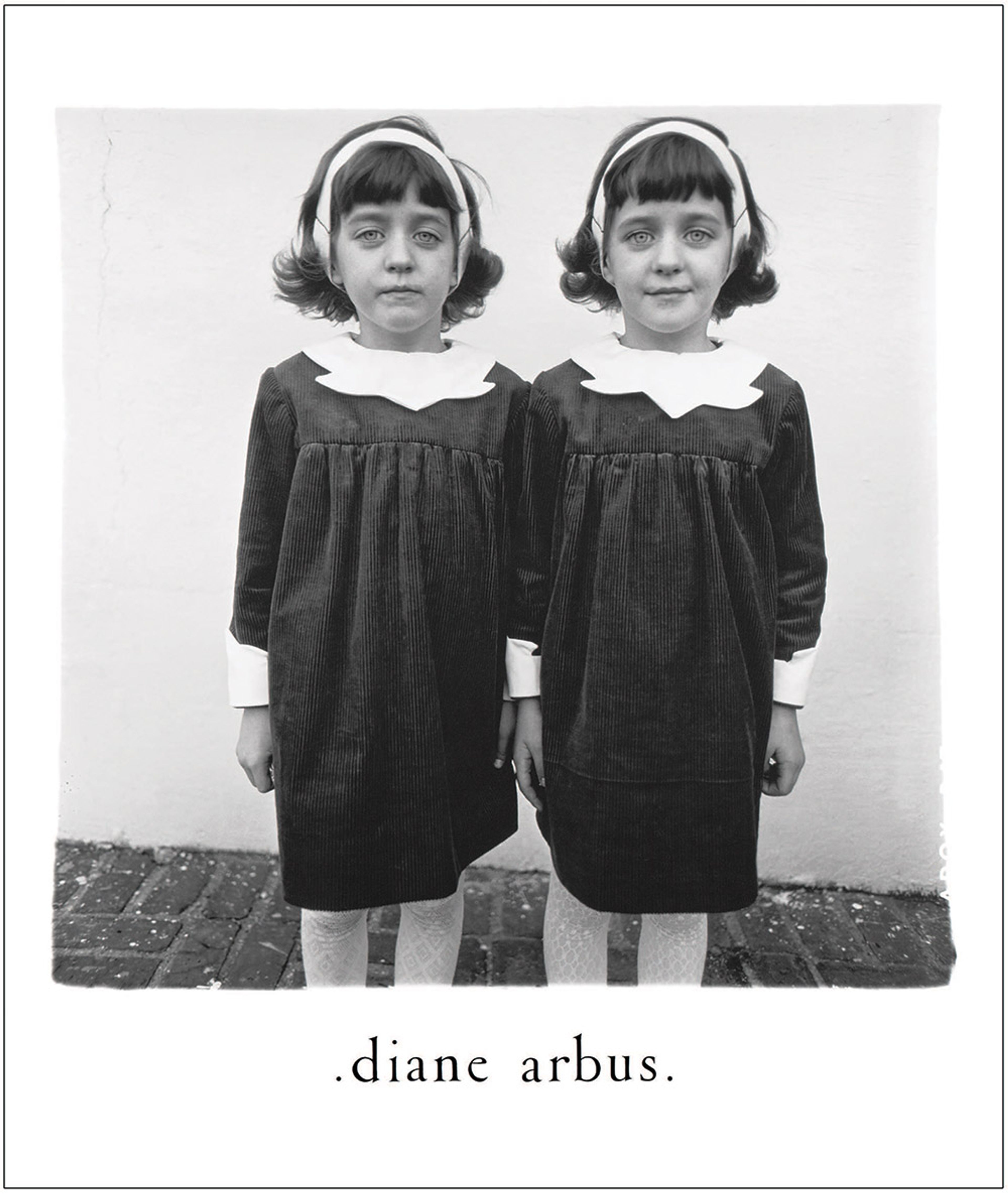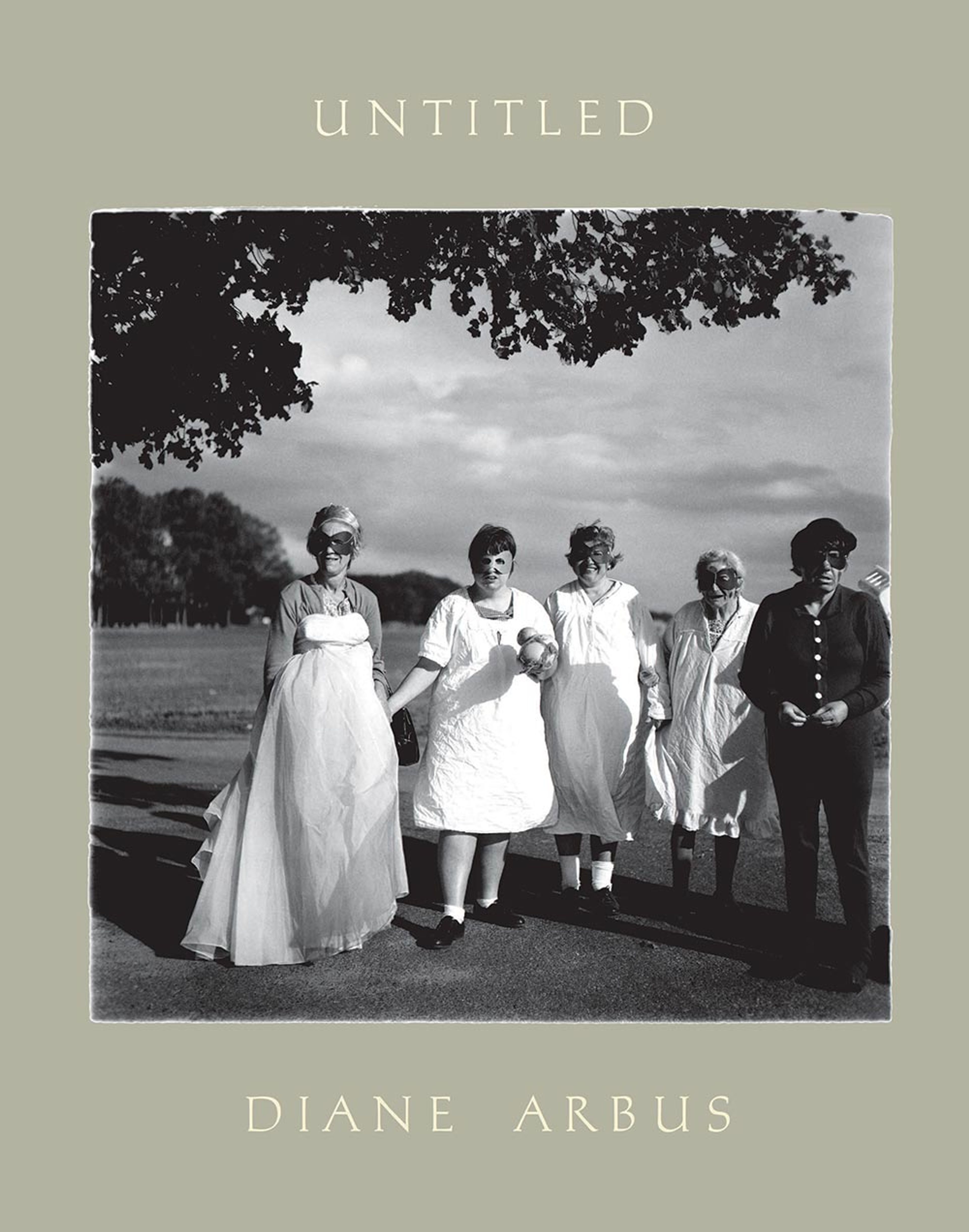Diane Arbus
Diane Arbus (1923–1971) is one of the most original and influential artists of the twentieth century. Arbus’s depictions of couples, children, female impersonators, nudists, New York City pedestrians, suburban families, circus performers, and celebrities, among others, span the breadth of the postwar American social sphere and constitute a diverse and singularly compelling portrait of humanity.
Learn MoreSurvey
Exhibitions

Explore Exhibitions

Explore Videos
Artist News
Biography
Diane Arbus (1923–1971) is one of the most original and influential artists of the twentieth century. She studied photography with Berenice Abbott, Alexey Brodovitch, and Lisette Model and had her first published photographs appear in Esquire in 1960. In 1963 and 1966 she was awarded John Simon Guggenheim Fellowships and was one of three photographers whose work was the focus of New Documents, John Szarkowski’s legendary exhibition at The Museum of Modern Art, New York, in 1967. Arbus’s depictions of couples, children, female impersonators, nudists, New York City pedestrians, suburban families, circus performers, and celebrities, among others, span the breadth of the postwar American social sphere and constitute a diverse and singularly compelling portrait of humanity.
A year after her death, Arbus’s work was selected for inclusion in the Venice Biennale—the first photographs to be so honored. The Museum of Modern Art, New York, hosted a major retrospective that traveled throughout the United States and Canada from 1972 to 1975. A larger full-scale retrospective, Diane Arbus Revelations, was organized by the San Francisco Museum of Modern Art in 2003 and traveled to museums in the United States and Europe through 2006. A major European retrospective of Arbus’s work opened at the Jeu de Paume, Paris, in 2011 and traveled to Winterthur, Berlin, and Amsterdam through 2013. In 2016, The Met Breuer, New York, hosted in the beginning, a major exhibition of Arbus’s work focusing on never-before-seen early photographs from 1956–1962, the first seven years of her career. This show traveled to the San Francisco Museum of Modern Art (2017); Museo de Arte Latinoamericano de Buenos Aires Malba (2017); and the Hayward Gallery, London (2019). In 2018 and 2019, the Smithsonian American Art Museum, Washington, DC, hosted Diane Arbus: A box of ten photographs, an exhibition tracing the history of the portfolio that established the foundation for Arbus’s posthumous career and ushered in photography’s acceptance to the realm of “serious” art. In 2020, the Art Gallery of Ontario, Toronto, presented a solo exhibition of the artist’s work titled Diane Arbus: Photographs, 1956–1971, which later traveled to the Louisiana Museum of Modern Art, Humlebæk, Denmark, in 2022, as well as the Montreal Museum of Fine Arts from 2022 to 2023. In 2023, the solo exhibition Diane Arbus: Constellation was on view at LUMA Arles, France, and Diane Arbus: A Box of Ten Photographs was presented at City Gallery Wellington, New Zealand.
In 2007, The Metropolitan Museum of Art acquired the artist’s complete archive from the Estate of Diane Arbus. The collection includes hundreds of early and unique photographs by Arbus, negatives and contact prints from 7,500 rolls of film, and glassine print sleeves annotated by the artist, as well as her photography collection, library, and papers including appointment books, notebooks, correspondence, writings, and ephemera.
In 2018, inaugurating their collaboration as co-representatives of the Estate of Diane Arbus, David Zwirner and Fraenkel Gallery presented the first complete presentation of Diane Arbus’s Untitled series: sixty-six images made at residences for people with developmental disabilities to which Arbus returned for picnics, dances, and at Halloween between 1969 and 1971, the last years of her life.
In fall of 2022, David Zwirner and Fraenkel Gallery presented Cataclysm: The 1972 Diane Arbus Retrospective Revisited at David Zwirner’s 20th Street location in New York, which commemorated the fiftieth anniversary of the artist’s momentous 1972 posthumous retrospective at The Museum of Modern Art, New York. The exhibition traveled to David Zwirner Los Angeles in 2025. The two galleries also presented Diane Arbus: First Coming, in 2022, at David Zwirner’s Hong Kong location. This was the artist’s first solo presentation in Greater China. Diane Arbus: Sanctum Sanctorum is currently on view at David Zwirner London, and will travel to Fraenkel Gallery, San Francisco, in the spring of 2026.
Nine publications, all of which remain currently in print or available, examine the artist’s work: Diane Arbus (Aperture, 1972); Magazine Work (1984); Untitled (1995); Diane Arbus Revelations (2003); Diane Arbus: A Chronology (2011); Silent Dialogues: Diane Arbus & Howard Nemerov (2015); in the beginning (2016); Diane Arbus: A box of ten photographs (2018); and Diane Arbus: Documents (2022).
In addition to numerous institutions around the world that have Arbus photographs in their collections, the ones with significant holdings include the Art Gallery of Ontario, Toronto; Centre Pompidou, Paris; The Metropolitan Museum of Art, New York; Museum of Fine Arts, Houston; Museum of Contemporary Art, Los Angeles; San Francisco Museum of Modern Art; The Museum of Modern Art, New York; National Galleries of Scotland, Edinburgh; and the Tate, United Kingdom.
Selected Press
Selected Titles

Request more information
